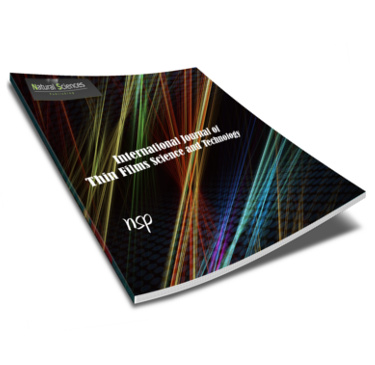International Journal of Thin Film Science and Technology

Abstract
In this Chapter, we demonstrated the synthesis of Lead sulphide by using low-cost chemical displacement method. We used thioacetamide for the source of sulphide ion and for the source metal salt; lead nitrate was used. The structural, morphological, metal percentage and optical properties of as synthesized nanoparticles are investigated by using X-ray diffraction (XRD), Uv-Visible spectra; Field emission gun Scanning electron microscopy (FEG-SEM) with EDS, Fourier transforms infrared spectroscopy (FTIR), High-resolution transmission electron microscopy (HR-TEM) and Photoluminescence spectroscopy (PL).The average particle size of the nanoparticles from the x-ray diffraction is about 20 nm and also field emission gun Scanning electron microscopy shows good morphology and exhibited clearly cubic shape. Further, the photocatalytic degradation of Janus green B dye was measured by visible absorption spectroscopy. To obtain the optimal conditions for the dye degradation, the effect of various experimental parameters, i.e., pH, amount of nanoparticles, concentration of dye and light intensity on the rate of reaction was studied. It was found that the JGB dye degradation gave the best results at a pH of 7.0, dye concentration= 200 ppm and using a 70 mW·cm–2 light intensity with 0.5 g of PbS nanoparticles. At room temperature, the photocatalytic degradation of Janus green B dye was observed about 93.5%.
Recommended Citation
Pathan, Amanullakhan; G. Prajapati, Chetan; P. Dave, Riddhi; and P. Bhasin, C.
(2022)
"Effective and Feasible Photocatalytic Degradation of Janus Green B dye in Aqueous Media using PbS/CTAB Nanocomposites,"
International Journal of Thin Film Science and Technology: Vol. 11
:
Iss.
2
, PP -.
Available at:
https://digitalcommons.aaru.edu.jo/ijtfst/vol11/iss2/13

